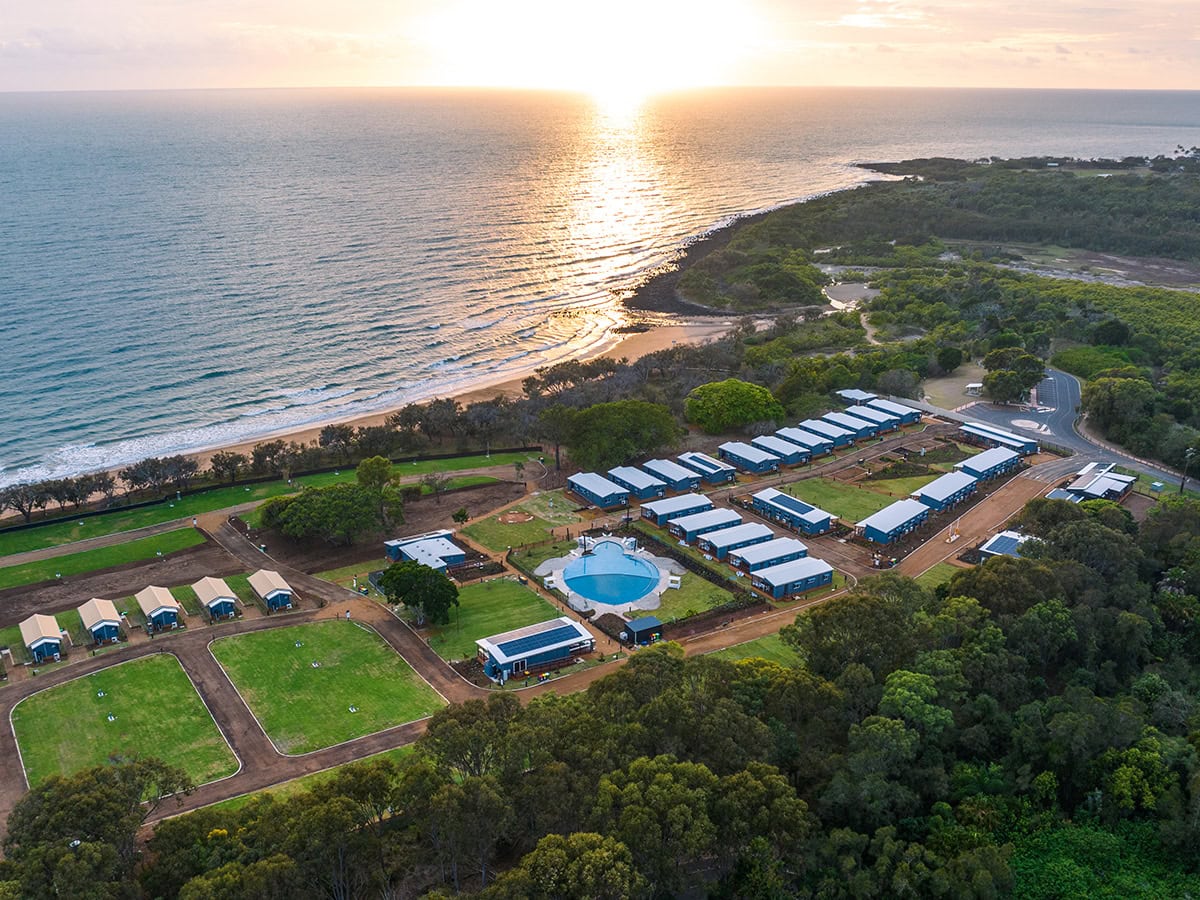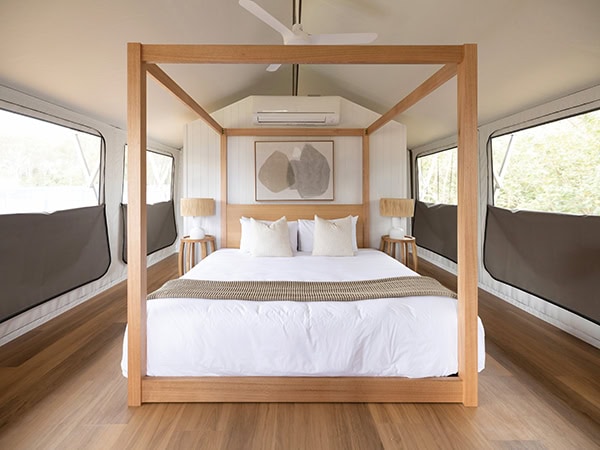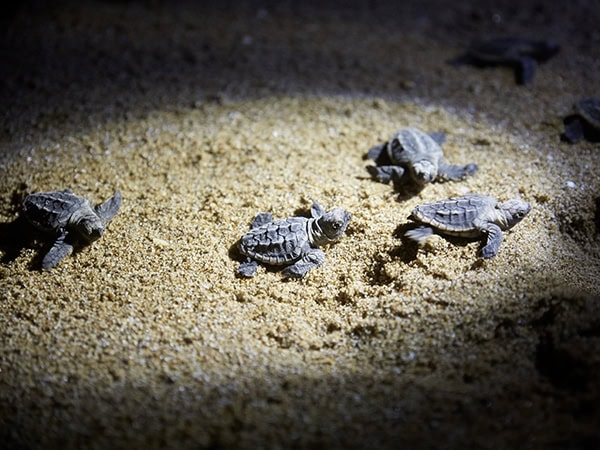03 December 2024
![]() 5 mins Read
5 mins Read

In the darkness, lit only by a headlamp, a turtle egg – warm, soft, white and about the size of a ping-pong ball – is pointed out to us. Murmurs and gasps punctuate the silence as the gathered group watches closely as a female turtle lays eggs in the sandy chamber she has dug in the dunes. On a turtle tour at Mon Repos Conservation Area near Bundaberg, home to the largest population of nesting marine turtles on Australia’s east coast and the most significant loggerhead turtle nesting population in the South Pacific, one of nature’s miracles unfolds.
Just a stone’s throw from the turtle nesting grounds, set behind the sand dunes at Mon Repos, NRMA Parks and Resorts has opened its newest nature-based accommodation, Turtle Sands, setting new benchmarks in wildlife-friendly design, environmental sustainability and guest accessibility. The $28 million ecotourism project is the result of almost three years of planning in consultation with National Parks and Wildlife Service and other bodies.
A favourite year-round holiday destination for generations, Mon Repos offers easy access to Queensland’s Southern Great Barrier Reef region with its rich marine life, rainforest walks, coastal hikes and the annual migration of humpback whales along the coast.

Easily access the Southern Great Barrier Reef. (Image: Tourism and Events Queensland)
Built with a focus on preserving and enhancing the neighbouring population of endangered loggerhead sea turtles, Turtle Sands incorporates industry-leading sustainability initiatives.
Guest accommodation includes camping and caravanning sites, spacious state-of-the-art contemporary villas, a premium beach house designed for couples, and glamping tents constructed using light- and sound-proof, sustainable materials to limit the impact on the turtles.
Two types of accessible accommodation are available – three-bedroom self-contained villas overlooking the beach, and cost-effective accessible studio-style accommodation with a central unisex accessible toilet and shower. Throughout the resort, including the camp kitchen, barbecue areas, laundry and playground, facilities are designed for accessibility.
Poolside villas have plenty of room for families, with views over the sparkling turtle pool. There are also EV chargers in their car parks, while studio units have chargers available in every second car park and there is one central fast charger at the resort entrance. And of course, all My NRMA members save on stays.

Sleep in style with comfortable and eco-friendly accommodation.
During turtle nesting and hatching season (October to April) guests at Turtle Sands are asked to make the Turtle Protection Promise to help preserve the turtle population, including minimising the use of lights after dark, staying off the beach at night (unless on a tour) and avoiding nesting sites.
Under the resort’s Turtle Management Plan, every aspect has been carefully designed to limit the impact on the turtles, including reducing light glow during the summer through use of landscaping, awnings, blinds, tinted glass and light-absorbent exterior paint.
Turtle Sands’ commitment to sustainability means the resort operates entirely on green energy, with an innovative 100kWh solar system with battery storage ensuring ample and steady power for all guests. Motion-sensor air conditioning and interior lighting is designed to conserve energy in accommodation by shutting off when not in use.
Recycled materials have been used wherever possible around the resort, including for the pool furniture and benches.

Feel good about a stay powered by green energy.
Interactive and educational tours, run by Queensland Parks and Wildlife out of the Mon Repos Turtle Centre, adjacent to the resort, operate nightly from November to March, providing unforgettable encounters with endangered Loggerhead sea turtles as well as a chance to learn the most responsible way to visit their fragile habitat.
While the nesting turtles and their tiny hatchlings that scurry down the sand to the ocean a few months later are the undisputed stars of the show at Mon Repos, there are plenty of other ways to explore the Southern Great Barrier Reef region or to simply relax.

Spot baby turtles at night. (Image: Tourism Australia)
The stunning beach location at Mon Repos makes a stay at Turtle Sands, with its direct access to the pandanus-fringed beach, a year-round destination. Guests can also walk or ride along the Turtle Trail for 1.6km to Neilson’s Beach, which is patrolled by the local surf lifesaving club.
Aside from the beach, the turtle-shaped swimming pool surrounded by cabanas is the perfect place to relax. With a graded beach entry, the pool is also accessible and a ‘wet wheelchair’ is available.
To explore further afield, take a five-minute drive or walk or ride along the 3km scenic path from the resort to Bargara. E-bikes are available to rent at Turtle Sands. It is a 15-minute drive to the larger town of Bundaberg, where attractions include the rum distillery and a strawberry farm. Learn more about the significance of this region to the Taribelang Bunda, Gooreng Gooreng, Gurang, and Byellee peoples on a First Nations guided tours.
Day trips from Bundaberg head to Lady Musgrave Island, a pristine coral cay encircled by a blue lagoon teeming with coral and fish, and a breeding ground for thousands of migratory seabirds.

Witness nature’s wonder with a stay at Turtle Sands. (Image: Tourism and Events Queensland)
LEAVE YOUR COMMENT